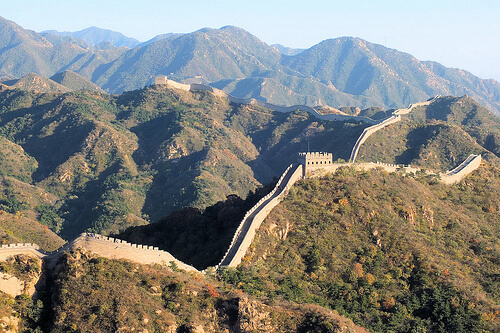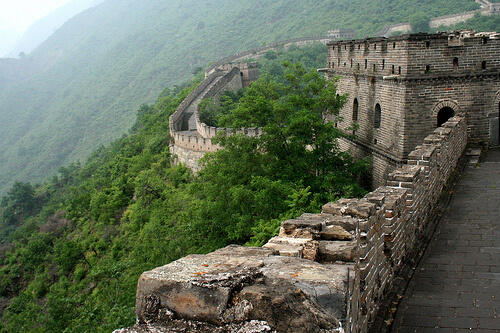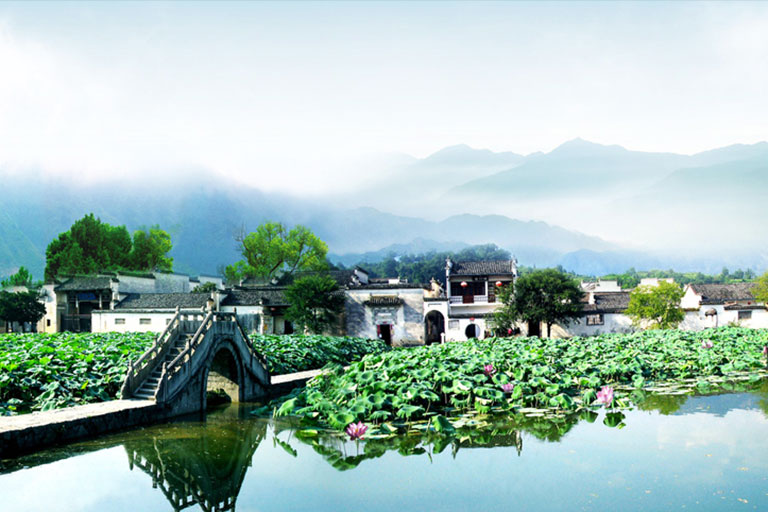What do you know about Great Wall of China?
All you need to know about the Chinese Great Wall before visiting it: Through 39 stories, you will know almost everything about the Great Wall of China!
The Great Wall of China, one of the world’s greatest monuments, was listed as World Heritage by UNESCO in 1987. Like a gigantic dragon, the Great Wall winds through deserts, meadows, mountains and mountains. plateaus, and covers 8,851.8 kilometers from East to West China . With a history of more than 2,000 years, some sections are in ruins or have disappeared. However, the Great Wall of China is still one of the most interesting attractions of our world because of its architectural and historical grandeur. Here is a list of facts and anecdotes to know before visiting the Great Wall of China .
In your opinion, can we really see the Wall from the Moon?
Photo Credit: Flickr – Keith Roper
1. While the Great Wall of China is not one of the Seven Wonders of the Ancient World, it is usually included in the Seven New Wonders of the World .
2. In 1987, UNESCO places the Great Wall of China on the list of major national and historical sites of the world.
3. Contrary to the myth that we can believe, the Great Wall is not a single continuous wall built at one time. In reality, the wall is a discontinuous network of segments built by different dynasties to protect the northern border of China.
4. During its construction, the Great Wall was called “the longest cemetery on earth” because many people died while building it. According to testimonies, it has claimed the lives of more than one million people.
5. The Great Wall of China is also known as Wanli Changcheng or literally “the long wall” of 10,000 Li (a li is a distance measurement of about 500 m). The main wall is approximately 3,460 km long with an additional 2,860 km of sections and buttresses.
6. The Great Wall of China is the longest man-made building in the world.
7. The most visited section of the Great Wall is in Badaling, near Beijing. This part was built during the Ming Dynasty. It was the first section of the wall open to tourists in 1957. That’s where US President Nixon went, and it’s also here that there was the arrival of a cycling route at 2008 Summer Olympics.
8. As early as the 7th century BC, a number of small walls that served as fortifications and watchtowers had been built throughout the country. Initially, each state (Chu, Qi, Wei, Han, Zhao Yan, and Qin) who later united in the first Chinese empire had their own individual walls.
9. The length of all Chinese defense walls built in the last 2,000 years is about 50,000 km. The circumference of the Earth is 40 075 km.
10. The first “long” walls were built by Qin Shi Huang (260-210 BC), of the Qin Dynasty, which first unified China, but is most famous for its mausoleum. the Emperor Qin who is dedicated to him. It is from the Qin dynasty (pronounced “chin”) that the modern word “China” is derived. Few of these first walls still remain …
Photo credit: Flickr – firepile
11. Because the Great Wall was discontinuous, the Mongol invaders led by Genghis Khan (the “universal ruler”) had no problem passing the wall and then conquered most of northern China between the years. 1211 and 1223. They ruled all of China until 1368 when the Ming defeated the Mongols.
12. The dynasties after that of Qin, who rebuilt and continued the wall, were the Han (206 BC-220 AD), Sui (581-618 AD), Jin (1115-1234) and, the most famous, that of the Ming (1368-1644). What we can still see and visit today are the stones and brick walls mainly from the Ming Dynasty.
13. Contrary to common belief, the Great Wall of China can not be seen from the moonwithout help. This myth seems to have started in 1893 in the American magazine The Century and resurfaced in 1932, when Robert Ripley of Ripley’s Believe It or Not claims that the Great Wall can be seen from the moon, while the first space flight would arrive from decades later. It is indeed difficult to see the Wall of China from an orbit close only with the naked eye.
14. It is common to hear that the mortar used to seal the stones was made from human bones or that men are buried inside the Great Wall to reinforce it. However, the mortar was actually made from rice flour and not from human or other bone.
15. Legend has it that a helpful dragon traced the route of the Great Wall for manpower. The builders followed the dragon’s footsteps.
16. A popular legend about the Great Wall is the story of Meng Jiang Nu, the wife of a farmer who was forced to work on the wall during the Qin Dynasty. When she heard of her husband’s death, she cried until the wall collapsed, revealing her bones so that she could bury them.
17. At one time, the family members of those who died while working on the Great Wall had to carry the coffin to the top of the wall where there was a caged white rooster. The rooster’s singing was supposed to keep the spirit of the deceased awake until they had crossed the Wall, because the family feared that the spirit would escape and wander forever along the Wall.
18. Uranus, or Tian Wang, who was the personification of Paradise, is often depicted on reliefs found at strategic places and passages on the Great Wall.
19. The historian Arthur Walden has established that the popular concept of a Great Wall, and even the name itself, has not been inscribed in the Chinese consciousness directly since the Chinese tradition, but rather by European sources which idealized the wall. In fact, the wall rarely appears in Chinese art until the twentieth century.
20. Voltaire (1694-1778) examined the Great Wall several times, but he was still undecided about what the real subject was. He thought, for example, that the pyramids of Egypt were “childish” in relation to the Wall, which was an “excellent job”. Then at another time he calls the Wall a “monument to be feared” …
Photo credit: Flickr – Steve Webel
21. Franz Kafka (1883-1924) praised the Great Wall as a great feat of human engineering. He even wrote a short article entitled “The Great Wall of China”.
22. During the Chinese Cultural Revolution (1966-1978), the Great Wall was considered a sign of despotism, and people were encouraged to take bricks from the Wall and use them for their farms or homes.
23. President Nixon’s visit to China in 1972 developed tourism on the Great Wall. With the increase in tourism, wall sections were restored, and after the death of Mao Zedong, the Chinese government recognized the wall as a unifying symbol of the nation.
24. The Great Wall has often been compared to a dragon. In China, the dragon is a protective deity and is synonymous with spring and life energy. The Chinese believed the Earth was filled with dragons that gave shape to the mountains.
25. During the Ming Dynasty, nearly a million soldiers defended the Great Wall of “barbarians” and non-Chinese.
26. The labor force to build the Great Wall came from border guards, peasants, unemployed intellectuals, disgraced nobles, and detainees. In fact, there was a special penalty during the Qin and Han dynasties under which convicted criminals were forced to work on the Wall.
27. Before the Ming Dynasty, the wall was built with clay, adobe and stones. About 70% is clay and adobe. Bricks were used after the Ming Dynasty.
28. The Chinese invented the wheelbarrow and used it extensively in the construction of the Great Wall.
29. A section of the Great Wall in Gansu Province may disappear in the next 20 years due to erosion.
30. The watchtowers were built at regular intervals along the Great Wall and could reach more than 12 meters in height. They were used as lookouts and fortresses or to house soldiers’ troops and store supplies. They also served as a signal post, where flaming torches or flags were used for messages. They also represented a great diversity of architectural styles.
Photo credit: Flickr – Herbert Ponting
31. The western part of the Great Wall, with a long chain of watchtowers, served as a defense for those traveling on the Silk Road.
32. Parts of the Great Wall were surrounded by defensive ditches, which were either filled with water or left as ditches.
33. To defend the Great Wall, the Chinese used sophisticated weapons like axes, masses, spears, crossbows, halberds, and a local invention: gunpowder.
34. The last battle of the Great Wall takes place in 1938 during the Sino-Japanese War. Traces of bullets are still visible in the Gubeikou Wall.
35. Many temples were built along the Great Wall for the worship of the god of war, Guandi.
36. The Great Wall of China is 7.6 m high in some places and varies between 4.5 to 9 meters wide.
37. The highest point of the Great Wall is in Beijing at Heita Mountain (1,534 meters). The lowest point is in Laolongtou (sea level).
38. About 15 to 16 million people visit the Great Wall of China each year. The government has limited the number of visitors to 16 million to preserve the structure.
39. While the Great Wall is currently a symbol of national pride, China is debating how to manage and protect the Wall while controlling the development of mass tourism to it. Two organizations, the China Great Wall Society and the International Friends of the Great Wall, are dedicated to preserving it.
Are you going on a trip to China? Read Also
- Discover all our articles on China :All articles on the Middle Kingdom are listed here.
- 10 Days Itinerary in China
- 2 Weeks in China: Ultimate Itinerary
- Beijing: 13 must-do and must-see things
- Shanghai: The 12 things to do and see
- Xi’an: Top 15 Things to Do and See
- Top 10 things to do in Dali
- Top 10 things to do in Kunming
- Top 11 things to do in Lijiang
- China Crime Rate – Safety Travel Guide
- Top 23 Things to Do in Taiwan
- Top 25 Things to Do in Taipei and Our Itinerary








